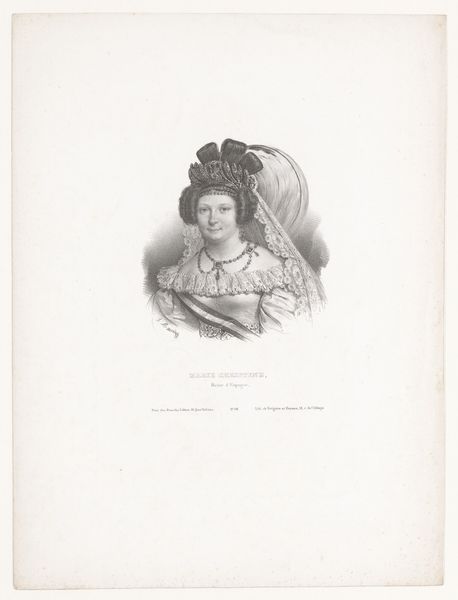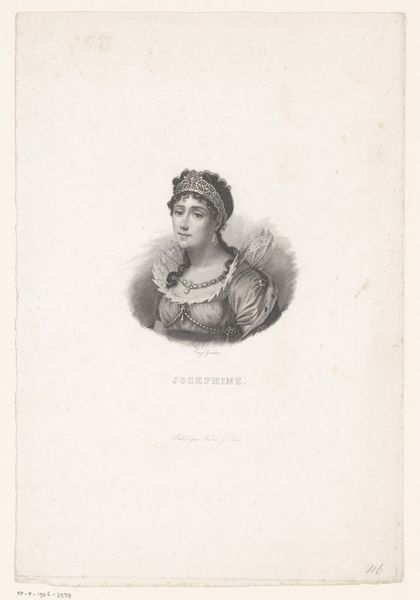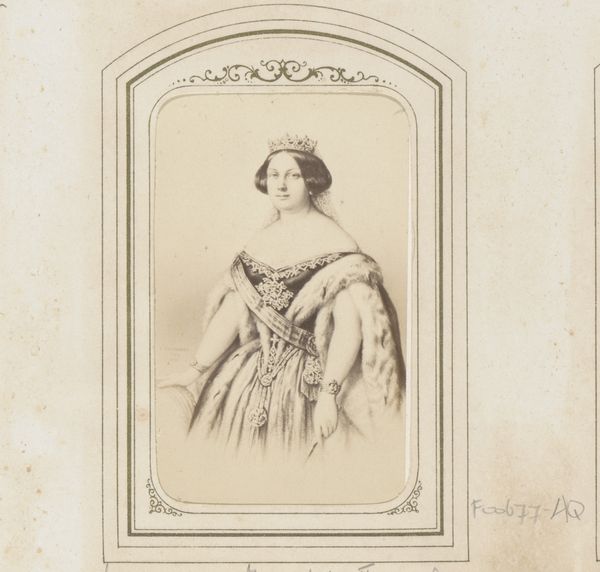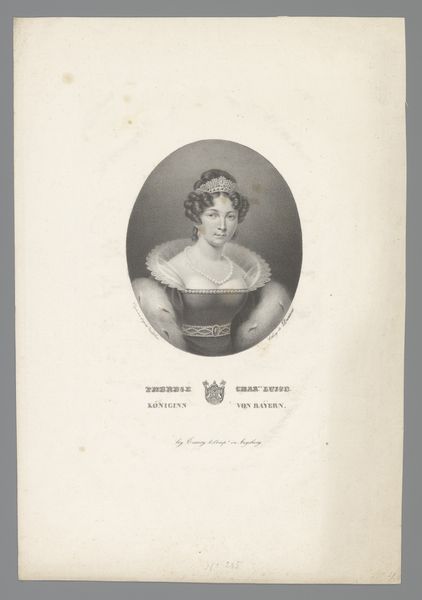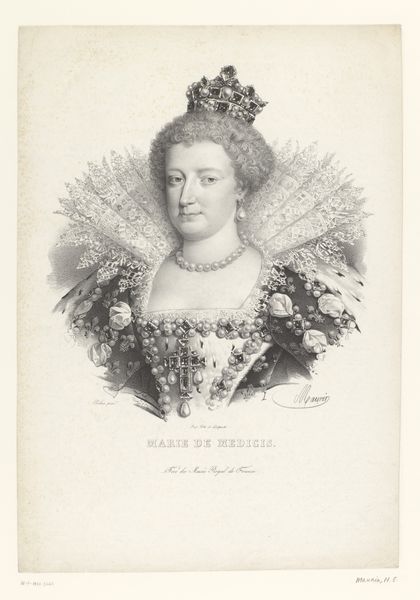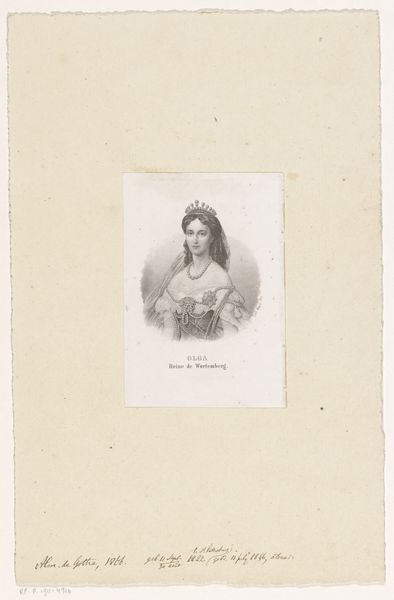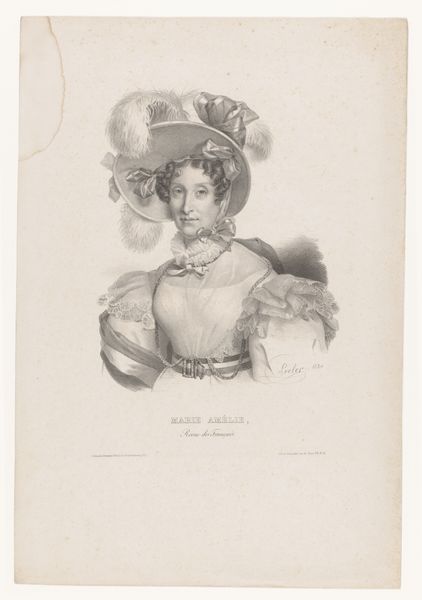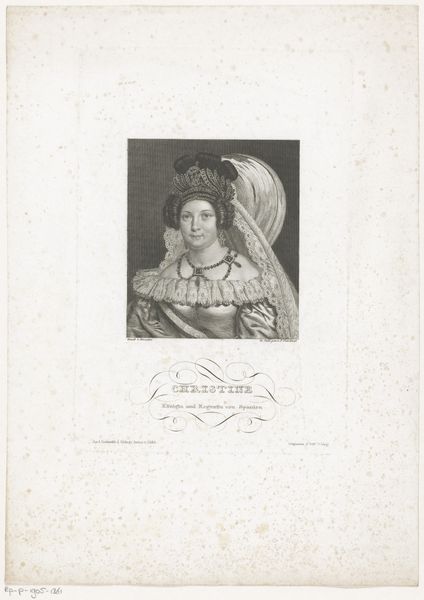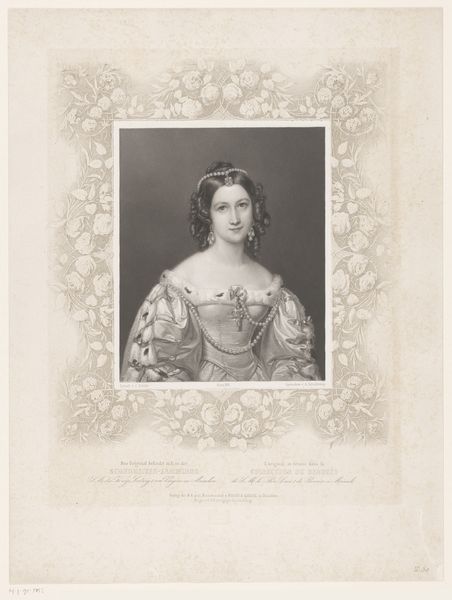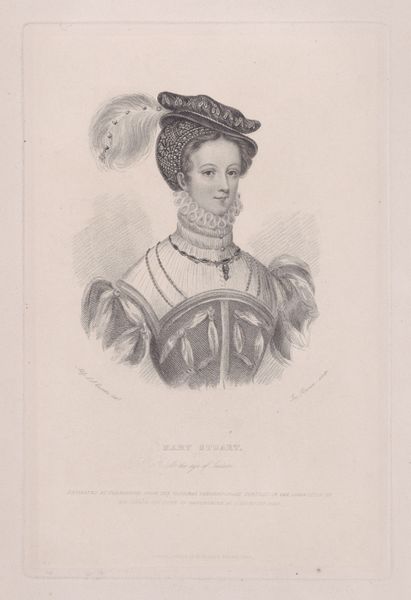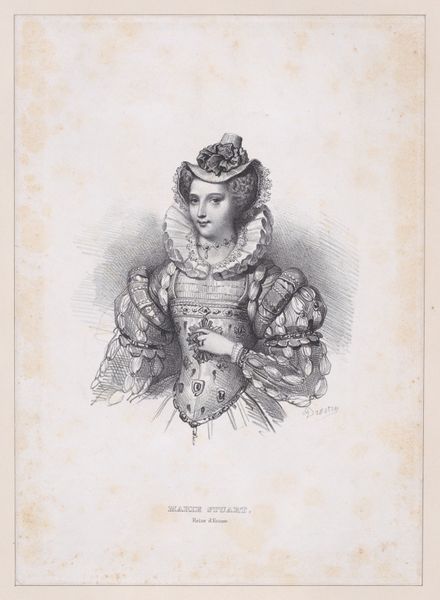
engraving
#
portrait
#
neoclacissism
#
old engraving style
#
romanticism
#
history-painting
#
engraving
Dimensions: height 561 mm, width 417 mm
Copyright: Rijks Museum: Open Domain
Curator: Our attention is drawn to a pre-1840 engraving titled "Portret van Maria Christina van Bourbon-Sicilië" by N. Des..., an image very much in the Neoclassical and Romantic styles. Editor: The scale is striking, actually, filling the page so completely. It lends a rather formal, imposing feel, almost like peering directly at royalty. Curator: The symbolic weight is certainly present. Notice her ornate headwear; it resembles a crown, embedded with floral patterns perhaps alluding to the vitality of her reign and, more subtly, feminine virtue. Editor: I’m more drawn to the technique itself. Engraving lends itself so well to detail but also a certain… reproduction-focused aesthetic. It democratizes the image, turning her status into something reproducible, commodifiable. Curator: Good point, yes, the duplication changes the perception. Beyond just documenting power, the image speaks to continuity; dynasties are cultural echoes preserved and repeated, validated visually for broader society. Consider the Neoclassical lines in her portrait as visual signifiers of stability. Editor: Exactly, but think about the labor involved—the engraver meticulously etching those lines. Someone's time, skill, and dedication went into producing what is ultimately a token of authority. What materials, techniques are being used to produce the political "icon"? Curator: Interesting perspective! So you view the painstaking crafting as revealing the investment in perpetuating an image of authority? It emphasizes not just who she is, but *why* we remember her. Editor: Precisely. Even down to the paper, the ink... These materials contribute to how the power functions in society, how she’s consumed, reinterpreted across classes and time. Curator: This makes me reflect on how potent historical images are, far beyond the individual portrayed. They symbolize systems, ideas, whole eras compressed into a gaze. Editor: And by examining the art’s tangible creation, the labor involved, the choice of materials, we begin to unlock how this representation was created and functions. It gives one a good reason to reflect on historical images overall.
Comments
No comments
Be the first to comment and join the conversation on the ultimate creative platform.
